I Was Defeated by the Toughest Off-Road Race in America
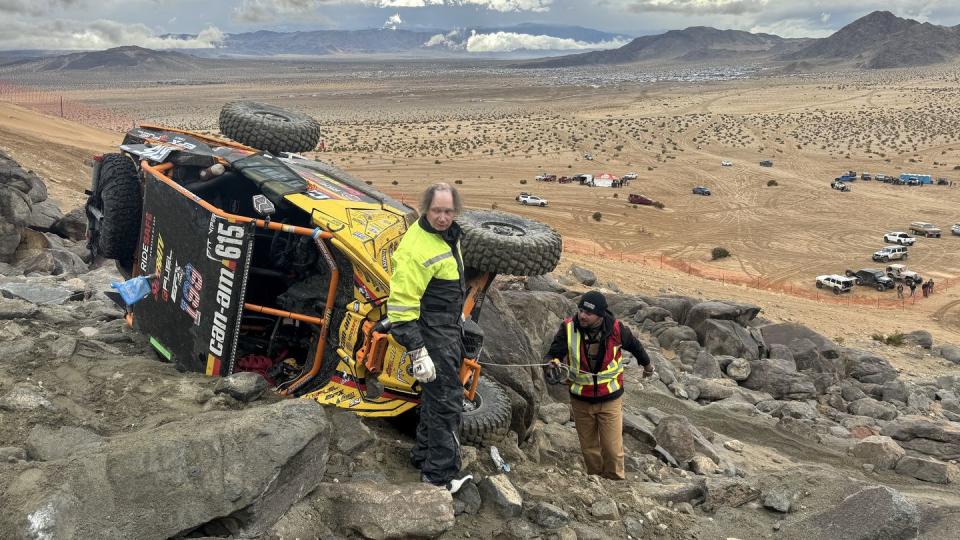
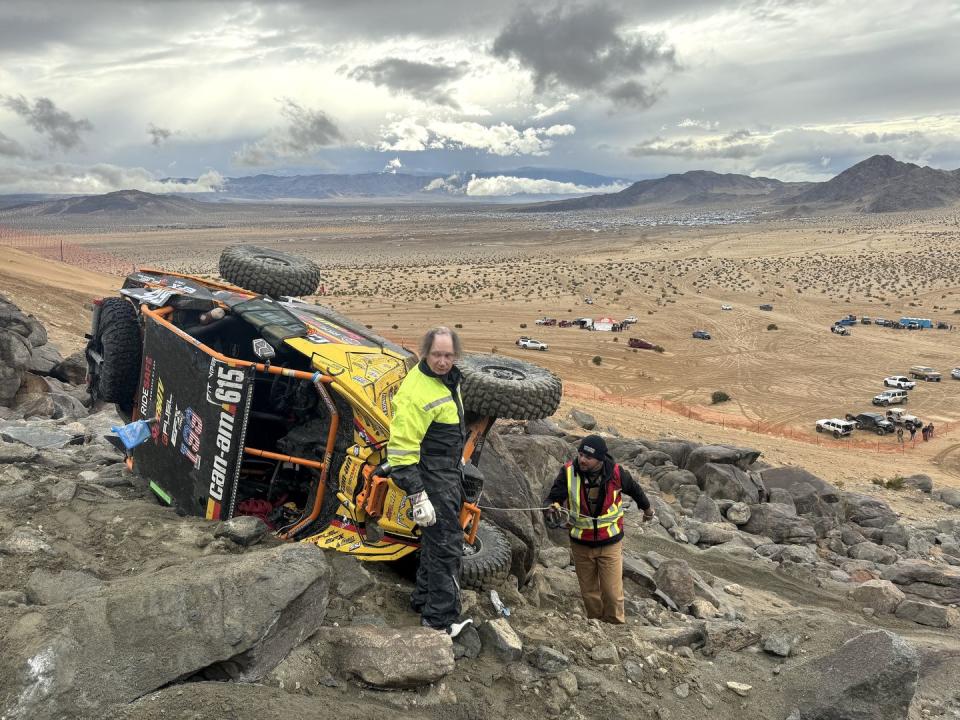
I went into rally co-driver mode, counting my driver Hubert Rowland, of Nitro Circus/Channel 199 fame, down from the time displayed on the RallySafe tracking unit, despite there being an actual flagger in a flag stand to start us off. The green flag dropped and the Can-Am reared back as we went through the first two corners and out into the desert. We were 124th of the 138 UTVs entered, starting 30 minutes behind the pole sitter even with a pair of cars starting every 30 seconds. The car alongside us got the holeshot, rabbiting out ahead, but Hubert was unconcerned. Our strategy was to drive safe to avoid any lost time making course-side repairs.
It didn't take long for the brutality of the race to make itself known. Only about two miles into the course is a section called "Turkey Claw," one of only two real rock obstacles in the race's desert-oriented first lap. We dropped into the rock garden and were immediately met with carnage. Within the first 50 feet, there was a stopped UTV leaning over with heavy suspension damage. A couple hundred feet beyond were two more broken vehicles, leading up to a line of four cars struggling to get through a narrow pass. We joined the queue, watching as each car ahead of us struggled, got stuck, reversed, and repeated. When the lane finally cleared and it was our turn, Hubert simply put it in gear and drove through it all in one shot. "It's all in the tires!" he yelled over the intercom.
We passed a total of six immobilized vehicles by the time we were out of the rocks—then, just as a light rain began to fall, it was back out into the sandy desert for the next 70-ish miles of the first lap.
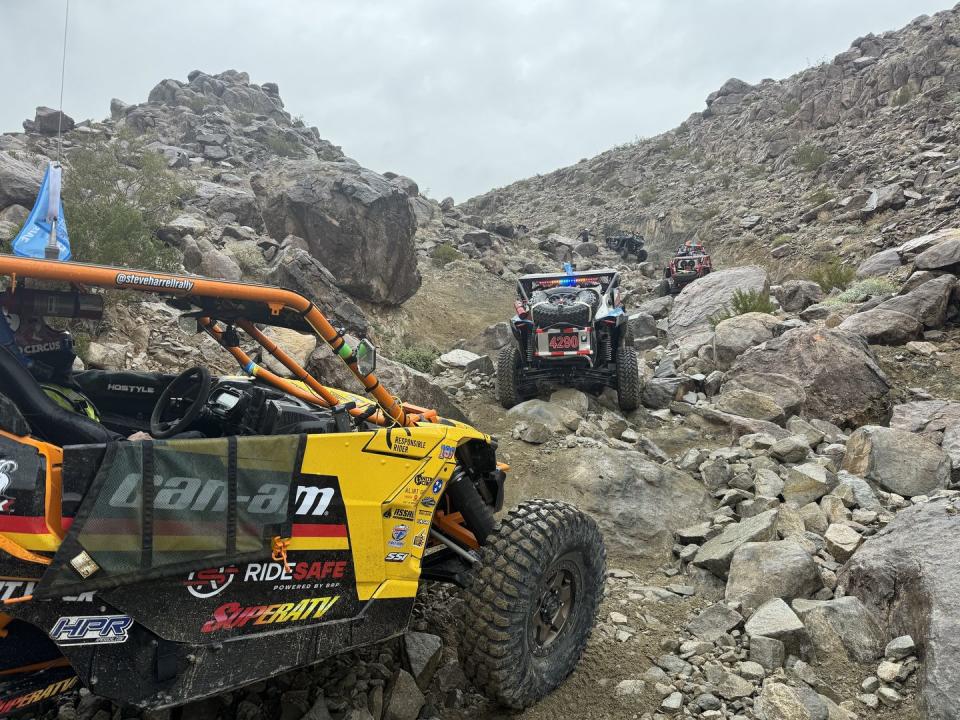
This is King of the Hammers, a uniquely American off-road race that combines high-speed desert running with ultra-technical rock crawling. Every year so many people descend on remote Johnson Valley, California, that a makeshift town springs up from the sand. Hammertown is more than five miles from one side to the other. As much a festival as it is a competition, King of the Hammers is like Burning Man but with buggies.
I'd raced a few events in the desert before, even running Vegas to Reno in a race-prepped Ford Ranger. And I have years more experience in the right seat of rally cars, sliding through forests (and occasionally into lakes) across North America. I thought I was prepared for this place. I was not.
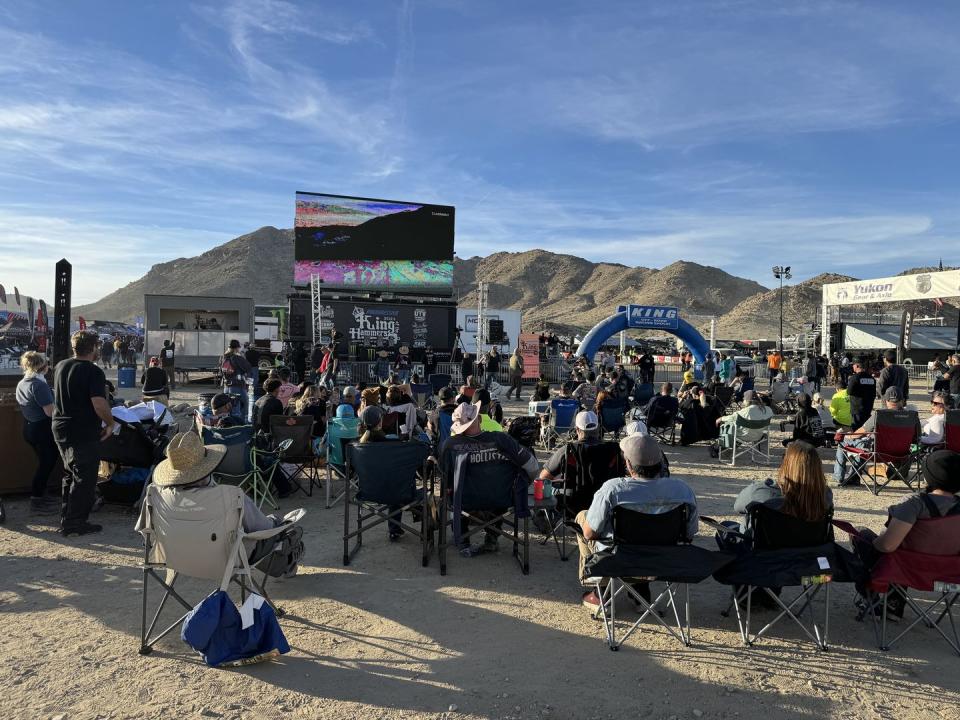
Even on this, the fastest part of the event, with long straights and multiple lines for much of the run, it is by no means an easy cruise. Intervals of two-foot-plus-tall whoops require finding the right speed to keep from being bucked sideways. Meanwhile hidden washouts and drop-offs lurk throughout, waiting to send a car into a high-speed tumble. The only real warning for hazards like these are stakes in the ground with a small "danger" marker on them (assuming said stake hasn't been run over by a prior competitor) and notes of the hazards in the GPS file on the iPad. About halfway through the lap this became a significant issue.
"iPad isn't updating," I said to Hubert. The map file still showed clearly on the screen, but our little black dot was no longer moving along the course, instead staying motionless at a mile marker we'd passed over a minute ago. Hubert was relegated to working without a net as I first tried restarting the app, then restarting the iPad. The dot would move, seem to follow along, then stop again. Opening other GPS apps showed the issue wasn't with the app, but the iPad itself, which had chosen the absolute worst time for the GPS antenna to exit the chat. I did my best to continue to provide notes based on just the map, using mile markers and corners to approximate where we were on the path, but as often as not my instruction was relegated to "danger drop-off, somewhere around here, maybe."
The rain was picking up as we pulled into our pit by the start/finish line. Our "keep it clean so we don't have to stop" strategy meant we did the initial lap in about 2 hours, 15 minutes, nowhere near the fastest times, but well under the lap's five-hour cutoff limit. The pit stop was a simple refuel and a less simple ratchet strap job on the steering column's height-adjustment mechanism, which had decided to loosen itself, then it was back onto the course. Now two and a half hours in, we had seven and a half left to get through the far more challenging rock lap.
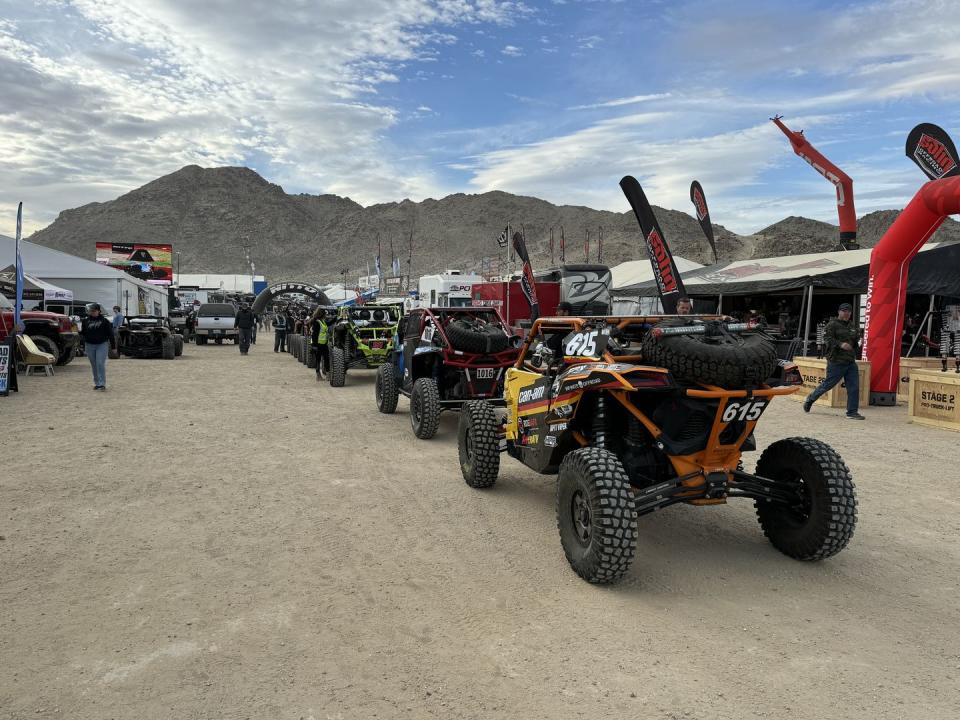
Our race vehicle, a 2020 Can-Am Maverick X3 XRC, is the rock-crawler edition of the popular Maverick X3. The XRC package differentiates itself from the standard X3 with features such as fully enclosed doors and a full roof to prevent intrusions, full skid plates on the underbody and rear arms, rock sliders, and a factory winch.
We were running in the Sportsman Stock class, a category aimed toward trail riders and newer competitors interested in experiencing Hammers but not interested in things like championship points, so our vehicle was close to stock aside from the requisite roll cage and safety gear.
What few modifications had been made were mostly for durability rather than performance: stronger arms and axles, heavier radius rods, stronger drive shaft and ball joints. The only real performance-oriented changes were a spring kit, upgraded clutch, a revalve of the shocks, an engine remap, and 33-inch rock tires instead of the factory 32s.
To call its ability on the rocks impressive is an understatement.
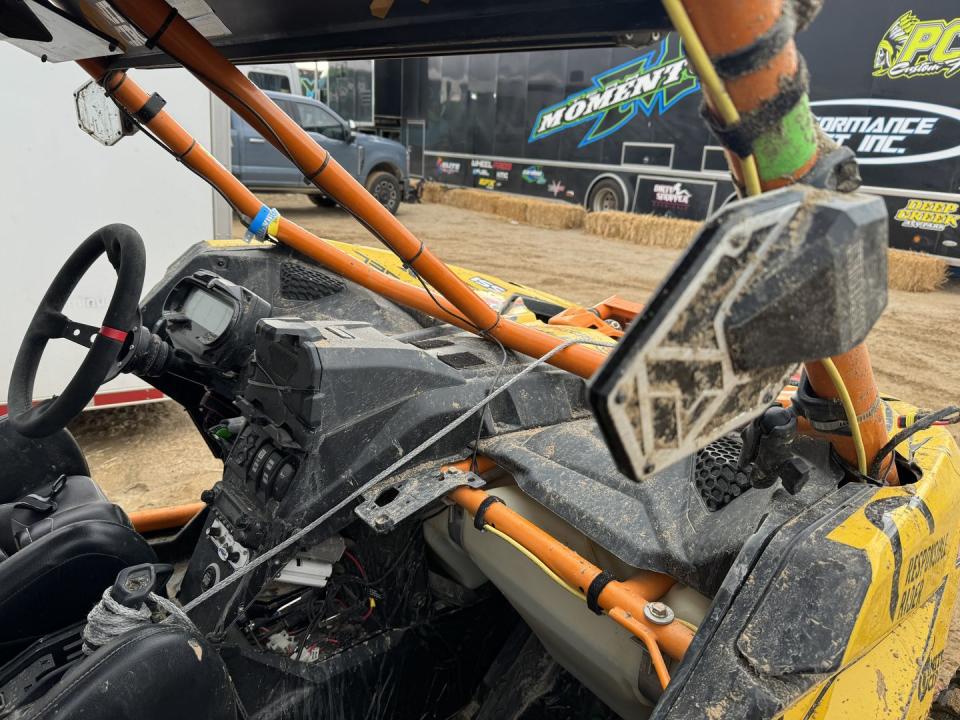
The initial few miles of the second lap follow the first, which meant another drive through Turkey Claw. We were once again met with carnage and queues, but this time we were among those needing to use reverse. The rocks that had been dry and grippy the first pass were now slick with rain. "We might need to call it good," Hubert mused over the intercom, "cause this is going to cause a lot of problems." The first little tendrils of doubt had started to settle in.
Despite the concerns, we pressed on. Getting out of the rocks and into the sand, we were met by the bright-red media helicopter, flying about 50 feet off the ground as it tracked us through the desert. The helicopter broke off as we reached the point where the second lap deviates from the first. It was now just a 10-mile blast east and then into the roughest rock courses in Johnson Valley.
The first few miles of rocks went surprisingly easy, with no hangups or traffic jams. This changed around the section known as "Highway 20," where an array of struggling vehicles littered a steep climb. We waited in line, then took our shot. Failure. Another attempt. Failure. A third. It was time for me to take part in one of the unique co-driver duties that sets King of the Hammers apart from any of my previous racing experiences.
"Go stack some rocks in that hole," Hubert instructed. Dutifully I unbelted, climbed from the car, and started grabbing the biggest rocks I could readily lift, carrying them across the rugged terrain, and slowly building a ramp for Hubert. After seven or eight rocks I stopped, breathing heavily and hoping I'd done enough. I stood back, waved Hubert on, and let out the best "woo!" I could manage as he bounced up the rocks, then continued up the hill. I climbed up behind him, slumped into the car, and belted back in. It was a short ride, as we came to a stop barely a hundred feet later, stuck precariously on a ledge. I was sent back out for KOH's other unique co-driving duty: winching. This was the job I'd been most apprehensive about, not having winched anything before. After a couple adjustments to the strap I'd thrown around the anchor rock we had a secure line, and the Can-Am's winch easily hoisted it up the hill. Success.
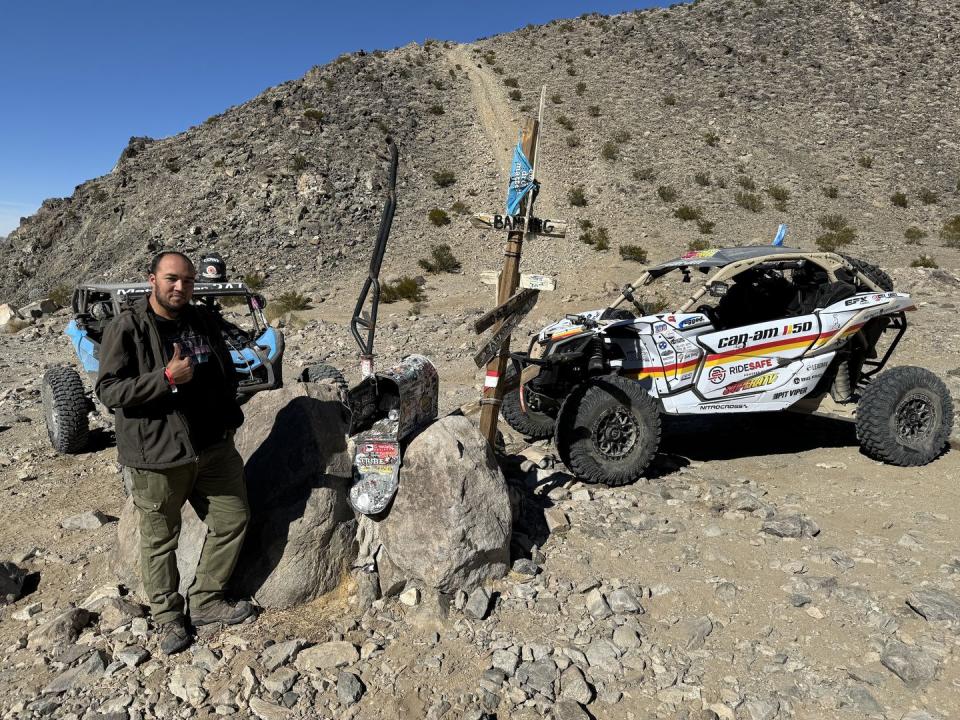
Once back in the car the discussion once again turned to whether we should continue. The rain was falling as hard as it had all day, and Hubert predicted the rest of our race would be made up of waiting at logjams and winching our way through the course, before ultimately exceeding the event time limit. We were only a mile away from one of the remote pit areas. We could get off course there and drive back to Hammertown, saving ourselves the hassle and frustration. Surprisingly, despite still breathing hard from twice scrambling up the hill behind the car and with rain soaking through my gloves and race suit, I said I wanted to keep going. In that moment I understood why these people were here. Hammers had me.
The next section of course was largely downhill, so we agreed to keep going for a bit. We would see how much time we lost in logjams, how slippery the rocks were getting, and depending on how it went we would probably exit the course at "Chocolate Thunder," the event's most infamous and challenging climb. If any place was going to be impassable, we agreed, that was it. Fortunately the base of Chocolate Thunder is right on the main lakebed. Pull off there, and it's an easy mile back to Hammertown.
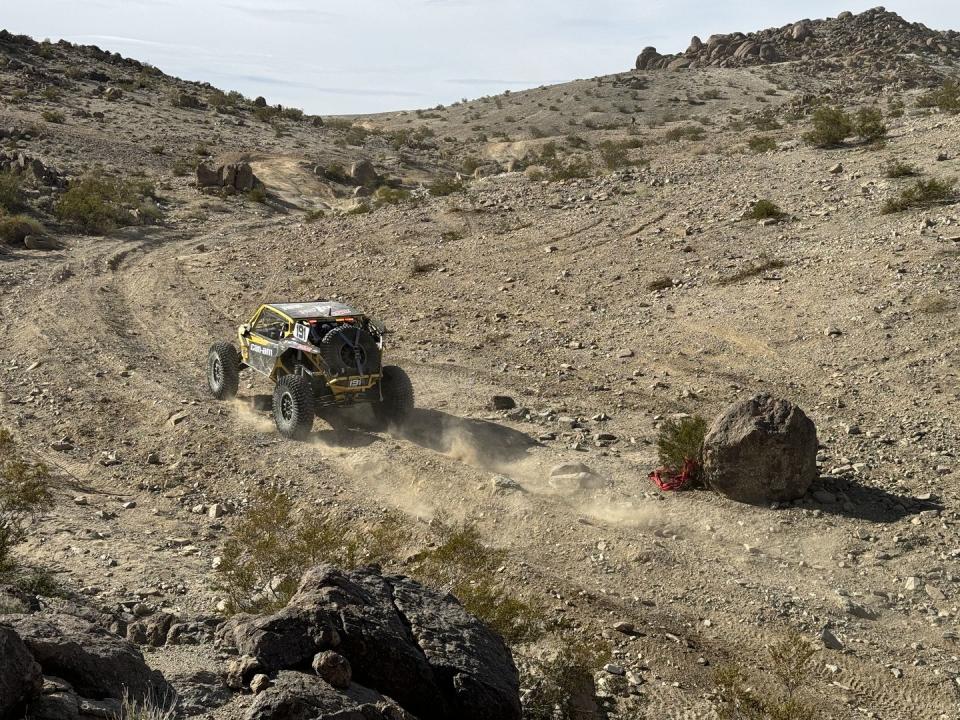
The drive to Chocolate Thunder was surprisingly clear and uneventful. We drove through the low cloud at the top of Fissure Mountain, easily descended through "Jackhammer," and dropped onto the lakebed. The rain had tapered off and the grip was returning to the rocks. None of the expected logjams presented themselves, and aside from a couple broken cars well off the trail, we didn't see any other competitors. We hadn't voiced it out loud, but Hubert and I were both starting to think we could finish the race after all. Provided there wasn't a massive holdup at Chocolate Thunder, we were both intent on staying in it. Unfortunately, we didn't get to find out.
There are two obstacles that lead up to the base of Chocolate Thunder, first a climb called "Her Problem" up one side of a ridge, then "Idle Issues," the short and steep descent down the other side. We caught a slow-moving Polaris on Her Problem, followed its line to the top, then paused at the start of Idle Issues to let it clear. Hubert lined up on the left edge of the descent, which had been the ideal line during the prerun, and started easing down the series of ledges. Halfway down the left front wheel dropped into a virtually invisible hole. The car leaned over to the left, slowly tipped past the point of no return, and rolled over, first onto Hubert's side, then the roof, before finally stopping on my side, an embedded boulder nearly the size of the car arresting us from rolling any farther.
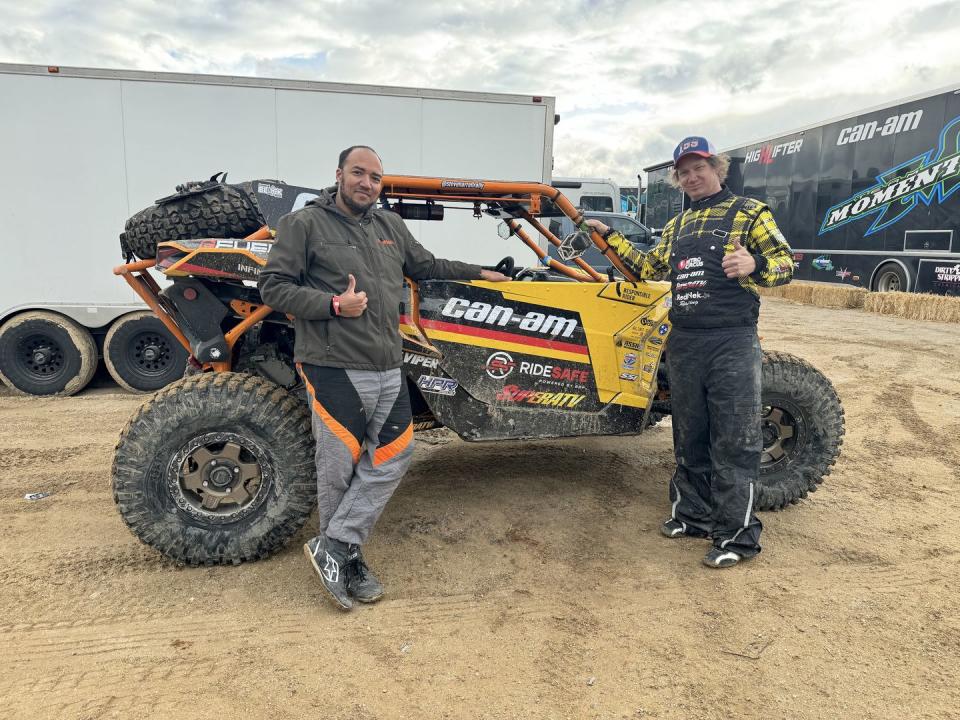
Marshals were on us in seconds, asking if we were all right. We were—it had been a slow roll. It took half an hour to get the car on its wheels and off the rocks, a process that required four marshals, a large recovery strap, and the secondary winch of a Jeep. We were told at the start that in order to continue we would need to self-recover, so once we strapped back into the Can-Am we cast a longing look at Chocolate Thunder then took the left turn back to Hammertown. Five and a half hours and 110 miles in the car, and this is how it ended.
The rest of the evening was a blur of telling and retelling the story as the adrenaline wore off and the fatigue set in. I was sore, I was tired. When I got back to the hotel it was all I could do to take my shoes off before collapsing into bed and immediately falling asleep. With the morning came reflection. This was far from my first early exit out of a race, but for some reason this one hit different. It felt like unfinished business. It hadn't even been 24 hours since I'd climbed out the side of our overturned car, and I was itching to try again, to actually see the finish line. That is the hook of the Hammers. It doesn't feel like a race, it feels like a challenge, and until you meet it you're left yearning, wondering what it's like on the other side of the mountain.

A car-loverHearst Owned
You Might Also Like

 Yahoo Autos
Yahoo Autos 